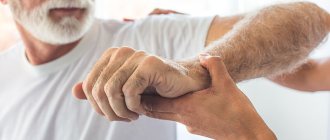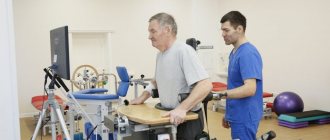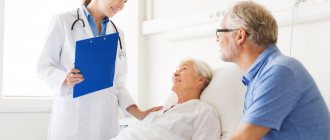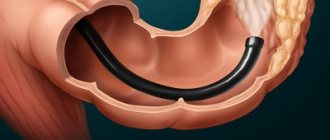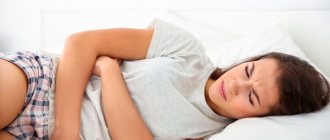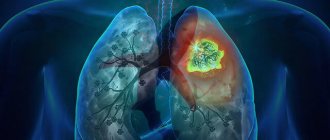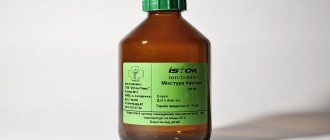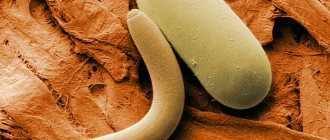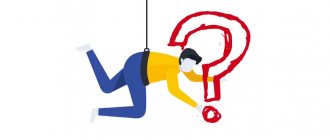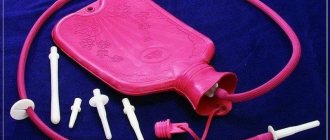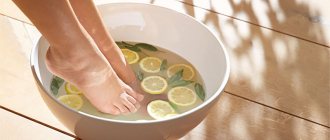Rehabilitation of a patient with ischemic brain damage begins in an inpatient setting. After emerging from the unconscious state and normalization of hemodynamic parameters, in addition to medications, the patient is prescribed diet, massage, and physical therapy. These measures are no less significant than constant medication use.
Optimal conditions for recovery are created in specialized centers, departments, and sanatoriums. There are rehabilitation specialists here: speech therapist, physiotherapist, exercise therapy instructors, psychologist, nutritionist. If the patient’s relatives cannot, for some reason, allow transfer to a sanatorium, then rehabilitation after an ischemic stroke is organized at home.
The importance of rehabilitation measures is demonstrated by statistical data: after 1.5 years, up to 85% of patients who have suffered an ischemic stroke are able to return to a standard of living approaching their usual one. This requires constant work by the patient himself and those close to him. In the first 4 months, 66% of victims achieve good results.
What periods are distinguished in rehabilitation therapy?
The sequence of rehabilitation periods is determined individually and depends on the morphological changes after ischemia in the lesion and vessels. Their duration also depends on the patient’s persistent compliance with all prescriptions at home. Most often distinguished:
- initial or early period - the first six months;
- late - up to a year;
- long-term results - more than a year.
Some rehabilitation therapists prefer 4 stages of the recovery process:
- the first month is the most dangerous for life and repeated disorders, all treatment is aimed at reducing tissue swelling, preventing compression of vital centers, stimulating collateral circulation, and preventing complications;
- the next 6 months - the patient needs psychological adaptation to his new condition, developing incentives for active resistance to the disease;
- second half of the year - with effective treatment, there is a partial restoration of functions lost after a stroke (speech, movements), which pleases the patient and relatives, but requires further hard work;
- from the second year, a complete return of a person’s abilities is possible, depending on the prevalence of focal changes, involvement of the central nuclei, and progression of ischemia.
The optimal period for rehabilitation is considered to be 3 years, but this does not mean abandoning later measures. The individual capabilities of the human brain have their own characteristics. Some patients need more time to eliminate the consequences after a cerebrovascular accident.
Rehabilitation after a stroke in an elderly person and recovery time
We recommend
“How to communicate with elderly parents so that everyone feels comfortable” Read more
Rehabilitation after a stroke in an elderly person should be complete; it is extremely important to make every effort so that the patient returns to a full life as soon as possible. For a quick recovery, it is best to undergo rehabilitation in specialized institutions where comprehensive treatment will be prescribed. Of course, recovery will take a lot of time; each case of the disease is individual. Some will take years, while others will get back on their feet in just a few months.
There are three stages of rehabilitation after a stroke in an elderly person:
- Early rehabilitation (six months).
- Late recovery (from 6 months to a year).
- Residual rehabilitation (at least a year has passed since the stroke).
During the first three months, the strength and functions of the affected part of the body are restored. The success and effectiveness of rehabilitation after a stroke in an elderly person largely depends on timely and competent treatment. According to doctors, the most important period of recovery is the first year.
The first six months are a favorable time for the rehabilitation of speech and motor functions after an attack. Many families place relatives after a cerebral hemorrhage in specialized boarding houses. This is explained by the fact that for effective treatment and recovery of the patient, the person caring for him must have at least primary skills and basic knowledge. Otherwise, the end result may be unsatisfactory.
In the first few days, the patient must be protected from any negativity and a favorable microclimate must be created. It is very important to talk to an older person and share good news.
The recovery period takes a long time, during which the patient undergoes complex treatment:
We recommend
“Adaptation of older people: in modern society and boarding homes” More details
1. Taking medications.
2. Physical activity:
- restorative gymnastics and physical education;
- massage treatments;
- physiotherapeutic manipulations (electrophoresis, healing baths, magnetic therapy).
3. Psychological support:
- a course with a psychologist;
- restoration of everyday and social skills;
- communication with other people.
4. Following a special diet - avoiding fried, fatty, spicy foods, alcohol, coffee. It is recommended to consume more foods rich in beneficial vitamins and microelements that stimulate the functioning of the brain and the body as a whole.
5. Restoration of the speech apparatus, logical thinking and memory:
- a course of lessons with a speech therapist;
- solving problems and puzzles;
- singing and reading lessons.
6. Rehabilitation of the musculoskeletal system:
- gymnastics, training on simulators;
- visiting the swimming pool;
- walking.
Throughout the entire course of rehabilitation with an elderly person after a stroke, relatives should be nearby; their goal is to surround the patient with love and care. For an elderly patient, this is the best medicine, giving strength and vigor for a speedy recovery and restoration of lost functions.
Recommended articles on this topic:
- Features of older people: psychological and physiological
- The main problems of older people and ways to solve them
- Boarding home for the elderly: features and rules of choice
What are the requirements for the patient's regimen?
At home, control over the patient’s regimen falls entirely on loved ones. A local therapist or a home visit to a neurologist can help with advice. They won't be able to come every day, so it's better to write questions in advance so you don't forget to find out.
One of the relatives must be present at the patient’s place of residence at all times. If all relatives work and cannot afford alternate vacations, then you will have to hire a nurse. You should first ask about her work experience and characteristics.
While the patient is on bed rest, he needs the following:
- hygienic measures to prevent bedsores;
- sleep organization;
- special nutrition;
- establishing contact with impaired speech;
- daily massage;
- conducting passive and active physical exercises.
For treatment, it is important to create a positive attitude in the patient.
You should talk to the patient, tell the news, read books and newspapers. It is necessary to protect the patient from unpleasant news and emotional squabbles in the family. There are special exercises to restore speech. You can consult a speech therapist about them.
A separate article is devoted to this problem on our website.
The room where the patient is located should be ventilated several times a day. Heat and cold are equally contraindicated. Every 2.5 hours you need to change your position in bed, turn from one side to the other. This process is well combined with minimal passive warm-up of limbs paralyzed by stroke and massage, rubbing the skin with camphor alcohol, straightening and changing bed linen.
Blood pressure should be monitored three times a day. Sharp fluctuations contribute to repeated cerebral ischemia, so in such cases you should call a doctor and change the dose of medications taken.
Other methods of rehabilitation after a stroke in an elderly person
1. Rehabilitation with the help of drugs.
This type of recovery is based on the use of various manipulations and injections that regenerate the lost capabilities of the human brain. Medicines prescribed after hemorrhage work to improve blood flow through the vessels of the brain (nootropic drugs). They also have a positive effect on the metabolism in brain neurons and on the analytical and synthetic work of the cerebral cortex.
2. Massage.
Massage for rehabilitation after a stroke of an elderly person consists of several stages: the patient is placed on his back, the paralyzed arm is moved to the side and fixed at the level of the shoulder joint. It is important that the hand and forearm are extended. Next, carefully massage all the folds, joints of the fingers, hands, and elbows. Movements should be slow and careful, without causing pain or tone.
The injured leg should be massaged in the same way as the arm. You need to place a pillow or a towel cushion under your knee.
3. Special simulators.
Fortunately, in modern stores you can find any auxiliary simulators for restoring motor skills. They help rehabilitate an elderly person at home or in a boarding house, even if he is unable to get out of bed. The operating principle of such devices is as follows: training damaged or paralyzed limbs that lack sensitivity. With the help of special devices, you can develop joints, activate the functioning of nerve endings and return the body to its previous healthy state.
The visible effect of rehabilitation after a stroke in an elderly person is provided by such simulators as:
- step trainer;
- bars for pull-ups (for working the muscles and joints of the arms and forearms);
- a hill for climbing and walking;
- weighted walking bars.
Only the doctor determines the set of necessary exercises, their duration and intensity.
4. Therapeutic physical education (physical therapy).
Today, there are many different methods for rehabilitation after a stroke of an elderly person. Exercise therapy is recognized as the most effective of them.
The set of exercises necessary for an elderly patient is selected individually. Among them may be:
1. Passive exercises. They should be performed with the help of a medical professional or a trained loved one:
- massage treatments;
- flexion of the joints of the legs and arms;
- raising and lowering limbs;
- fist clenching.
2. Exercises on a chair - suitable for patients who can sit:
- rotations and tilts of the head;
- imitation of the grasping function - clenching and unclenching a fist;
- special breathing exercises with squeezing and spreading of the shoulder blades.
3. Exercises in a standing position:
- hands rise up as you inhale and fall down as you exhale;
- a game involving a tennis ball, arms extended forward, fingers closed.
- alternately raising and lowering your legs on the chair seat;
- standing on tiptoes.
We recommend
“Gymnastics for the elderly: the best exercises for various diseases” Read more
What to prepare for welcoming a patient from the hospital?
The conditions for home treatment of a patient with a stroke should first of all provide for his safety and ease of mastering movements.
The bathroom, toilet, and bedside area must have grab bars or other devices that allow the patient to sit down and stand up without assistance.
- You should remove unnecessary things, boxes, carpets, wires from home appliances from the paths of movement. They increase the risk of falling.
- Some patients lose their sense of temperature and can get burned by too hot water. This will require installing thermometers in the bathroom.
- At first, it is better to use a tray or a small portable table for the patient’s food; it will be difficult to be in a common kitchen or dining room.
The purchase of a wheelchair can be postponed for six months, when the prospects for rehabilitation measures become clear. During this period, the patient may begin to walk independently.
If watching television programs is of great interest to the victim, then he will need a remote switch.
Where to go for help?
It is impossible to provide complete rehabilitation after a stroke in the home environment. Therefore, the most reasonable option for the family of an elderly person who has suffered an attack would be to enter into an agreement with a specialized institution, where he can receive help from highly qualified specialists and undergo a comprehensive rehabilitation program developed taking into account his diagnosis and characteristics of the body.
The Trust boarding house network has been providing care and rehabilitation to stroke victims for the past 5 years. The staff consists of highly qualified doctors and nurses with medical education. The boarding houses have all the conditions for a comfortable stay and full recovery after a stroke:
- Individual rehabilitation programs aimed at adaptation after a stroke and prevention of a recurrent attack.
- Regular medical examination of the patient.
- A full range of rehabilitation procedures: exercise therapy classes, exercises for the rehabilitation of speech and cognitive functions.
- Drug therapy.
- Social and psychological assistance, warm and attentive attitude towards each ward.
- Cozy rooms equipped with functional beds, wheelchairs, orthopedic mattresses.
- Prevention of bedsores and daily hygiene.
- Specialized 6 meals a day, rich in vitamins and microelements.
- Organization of leisure and communication.
By entrusting us with the care of your loved ones, you create decent conditions for life and restoration of their health, thereby reducing the recovery time after a stroke. To find out more details about our programs, leave a request on the website, and we will call you back at a time convenient for you.
Power problem
Typically, impaired swallowing during ischemic stroke occurs in the first days, and patients in the hospital face this problem. But after being discharged home, consequences may remain in the form of choking, slow chewing movements, and the inability to fully open the mouth. Therefore, the diet in the first months should be as gentle as possible.
For feeding, use a teaspoon, raise the patient on pillows, place a napkin on the chest
It is more convenient to drink not from a glass, but from a sippy cup with an elongated spout. Dishes are prepared pureed, semi-liquid.
The diet requires compliance with several rules:
- in food you will need to replace butter and animal fats with vegetable fats (olive, flaxseed, soybean, sunflower);
- the total amount of meat and fish in the diet should be about 120 g;
- among dairy products, kefir and cottage cheese, low-fat sour cream are preferred; natural milk causes bloating and unwanted fermentation;
- use seafood no more than twice a week;
- It is recommended to limit white bread, confectionery, and sweets;
- the patient is shown dried black grain bread, crispbread soaked in soup;
- tea with a spoon of honey is recommended at night;
- fruits and vegetables are included in the menu as chewing function is restored, it is recommended to make salads from grated apples and carrots, the total amount can be increased to 400 g;
- salt restriction is required for high blood pressure, the question should be asked to your doctor;
- weak green tea, water, fresh juices are allowed; in the absence of swelling in the legs and good kidney function, the total volume of liquid should be up to 2 liters per day.
The problem of excess weight requires the patient to lose weight, but fasting days should not be arranged in the first month of the home regime. Adaptation to new living conditions will lead to moderate weight loss.
When to start recovery after ischemic stroke injury
With such an illness, the patient must immediately go to the hospital to receive professional emergency care, followed by reliable treatment and elimination of the root causes of its manifestation.
The average hospital stay is 2-3 weeks if there are no complications. This period is enough to collect all the tests, identify the characteristics of the situation and drug treatment. But it is recommended to start professional rehabilitation from the first day after an apoplexy strike while still in the hospital under the supervision of doctors . This way you will restore lost speech, memory, etc. as reliably as possible.
Remember, the faster you begin to normalize your condition, the higher the likelihood of obtaining the most favorable prognosis for recovery, and the risk of relapse of an attack will also be reduced. It also allows you to more reliably and safely cope with various secondary diseases that appear after an attack.
How to restore swallowing?
Patients themselves associate swallowing problems with sensitivity on only one side of the mouth, the lips. Therefore, they cannot fully swallow food, choking and coughing.
Training will help restore sensitivity to the required level by doing the following exercises:
- imitation of the swallowing process with an empty mouth;
- yawning, opening your mouth wide;
- gargling with plain water;
- coughing;
- the patient puffs out his cheeks and holds the condition for a few seconds;
- pronouncing the long sound “i” while simultaneously tapping the larynx with your fingers.
Return of lost speech skills
Initially, when a client loses speech, it is important to speak in principle. And after that, specialists will help you work on your diction. First of all, a neuropsychologist works with the patient, helps to identify the problem and finds ways to resolve it. But you should be prepared for the fact that complete recovery may take several years. And all this time, the patient should be observed by a specialist and perform all the necessary exercises at home. It is extremely important to stimulate the speech apparatus with various exercises, both externally and internally.
You need to start the learning process again from simple to complex. If you are unable to restore the muscles of the pharynx and larynx with the help of specialized exercises and massage, then you can use electrical stimulation using professional equipment.
What to do in the first three months?
Within 3 months, the patient should develop his own adaptive skills for the toilet, washing, and dressing. The patient should not be rushed. Each independent victory over the disease should be accompanied by a positive attitude towards further recovery.
Developing muscle tone to prevent atrophy in the limbs must be done at least twice a day.
In the second month of rehabilitation measures, the patient can get out of bed independently and learns to maintain balance.
An assistant and observer are needed to support staggering. Developing independent movement begins with the help of a stable walker, then switches to a stick. In this case, it should be placed on the paralyzed side.
For the shoulder joint
Restoration of the forearm and shoulder joint takes place with the help of flexion and extension exercises, rotation, push-ups, muscle tension and relaxation, clapping, and massage. To do this, use exercise machines, dumbbells, and various devices. First, the arm is kneaded, then a set of exercises is performed; therapeutic exercises are always combined with a massage of the limbs. A set of exercises for the shoulder joint:
- The patient lies on his back, arms extended along the body. The instructor holds his hand at the elbow to avoid bending, takes the patient's palm with his other hand and moves the patient's arm up and down.
- The instructor performs circular movements with the patient's arm fixed in a straightened state.
- The patient lies on his back, with his arm slightly to the side. The instructor turns the straightened arm over, palm down, then up.
What exercises can you do?
Physical education classes begin with simple exercises. After successful completion, they move on to more complex ones. Healthy limbs need to be developed to increase support on them. A paralyzed arm or leg must “perform” passive flexion and extension until it “learns” to work more or less fully again.
You should start training in bed in a lying position
Feet recommended:
- climb up;
- bend and straighten your knees;
- twist your feet in both directions.
After about 2 weeks, you can perform the exercises while standing:
- walk slowly in place;
- lift the bent knee forward, move it to the side.
The squat is performed when the patient has fully restored the ability to stand upright and move around while maintaining balance.
Warming up the arms begins with flexion and extension of the elbows, hands, and fingers. To develop small movements with your fingers, you can use gaming techniques:
- mosaic,
- laying out cards,
- puzzles,
- fingering the rosary.
Hand movements are more finely organized by the brain, so recovery will require more effort
A patient after such a serious illness as a stroke must again learn to use a spoon and fork, or a door key. You should not pay attention to the methods of grasping an object; the patient himself chooses the most convenient option.
Some experts recommend tying a healthy arm to the body for five hours and trying to get by with one sore limb. This is necessary to create an emergency situation for the brain and force it to quickly return functions to the paralyzed arm.
Rules for bed rest after a stroke in an elderly person
After an attack, a person is hospitalized, so it is important to familiarize yourself with the definition of bed rest. It doesn’t matter at all with what severity of stroke the elderly person was admitted to the hospital - in the first few weeks, and sometimes even months, it is extremely important to lie down more time and reduce any bodily movements to a minimum.
After an ischemic stroke, the most common, unilateral damage is possible, in particular paralysis. The main thing is not to panic and convince the victim that with a reasonable approach to the problem and proper treatment, the lost functions will quickly be restored.
Hospital treatment and rehabilitation after a stroke in an elderly person implies compliance with important rules:
- Under no circumstances should the patient remain in one position for a long time; this is dangerous due to the appearance of bedsores, which will greatly complicate rehabilitation.
- It is necessary to turn the patient over regularly; experts recommend doing this approximately once every two to three hours.
- To restore motor skills and complete recovery, it is important to do therapeutic exercises.
- It is necessary to maintain correct body position.
Please note that an elderly patient will spend a long time in a supine position. Therefore, it is important to provide him with comfortable conditions for the shoulder joints, so that their mobility is preserved. Otherwise, soon the soft tissues and joints will begin to numb, and the elderly person will experience pain in these areas.
In a supine position, the injured arm should be at an elevated level. It is best to use a pillow or cushion for this. You can achieve the maximum effect by placing a small salt bag weighing up to 500 grams. The visible result from the above manipulations should be as follows:
- An elderly patient's arm does not bend at the elbow.
- Keeping your fingers aligned is especially important.
- The distance between the torso and shoulder should be the same and unchanged.
Pay attention to the rules of leg position during primary rehabilitation after a stroke in an elderly person:
- A special cushion should be placed under the legs of an elderly patient. This way you will achieve the desired elevation angle of 15–20 degrees, necessary for proper blood supply.
- There are also special foot rests. When using such a device, you need to check that it is in the neutral position.
Important note: for the patient to be in the correct position, both legs - both the injured and the healthy ones - must lie equally.
Following these rules is vital for proper rehabilitation after a stroke in an elderly person.
If the patient is lying on his side, other recommendations must be followed. Due to the fact that after hemorrhage only one side is paralyzed, the victim must lie in two positions - on the healthy side and on the sick one.
If an elderly patient is lying on the healthy side, place a support under the limbs and a pillow under the sore side. Pre-bend the non-working joints.
If an elderly patient is lying on the paralyzed side, you need to tilt his head down, but not too much. The paralyzed arm must be straightened and the palm placed on the body. In this position, the injured arm should be bent at a right angle, and the healthy arm should be pulled back.
We recommend
“Examination of an elderly person - which doctors should be seen regularly” Read more
What to do in the period from three months to six months?
After 3 months of successful recovery, the patient adapts to his condition and moves independently with the help of a stick. After 6 months, he learns to climb steps and carry light bags. Goes shopping in the store, walks, uses transport.
It is necessary to equip the patient with a telephone with quick access and put a note in his pocket indicating personal information, address and contact telephone number of relatives. These measures will add confidence to the patient and reassure the family.
Physical exercises can be performed with light dumbbells, pedaling on a simulator
During this period, it is already possible to gain lost muscle mass.
If the training of the patient’s right hand does not allow writing, then attention should be paid to mastering this function with the left hand.
Types and signs of stroke
A stroke is characterized by a sudden disruption of blood circulation in parts of the brain. There are two types of this pathological condition:
- ischemic – develops with narrowing and blockage of blood vessels;
- hemorrhagic - caused by serious damage or complete rupture of the arteries.
The subsequent rehabilitation program directly depends on the nature of the brain damage. It also affects the duration and prospects of recovery.
With any type of stroke, the cells of the nerve centers of the brain that are responsible for speech, vision, cognitive abilities, movements, etc. are affected. The degree of trauma is determined by the duration of the cerebrovascular accident and the general state of health.
Severe signs of a stroke, in which you need to urgently call an ambulance:
- severe weakness;
- numbness of the muscles of the face or limbs (sometimes on one side of the body);
- sudden deterioration of vision;
- unreasonable loss of coordination;
- difficulty speaking;
- problems with swallowing;
- convulsions;
- loss of consciousness;
- dizziness;
- throbbing headaches.
Therapy for acute cerebrovascular accident will be successful if you pay attention to the signs of this condition in time. The faster a person receives medical assistance, the greater the chances of a speedy recovery, since the higher the probability of keeping as many neurons alive as possible.
Emergency treatment is most effective within three to six hours of the first signs. After this time, changes in the affected areas of the brain may become irreversible, even if the patient was able to suffer a stroke.
Late rehabilitation
Late periods (more than six months after a stroke) require consolidation and refinement of the achieved results. To restore speech, the patient can completely switch to pronouncing complex phrases, maintaining smoothness. You should practice using your hands to fasten and unfasten buttons, play with a Rubik's cube, wash dishes, peel potatoes, sort through cereals.
Some patients find a pleasant hobby in mastering knitting, drawing
Acute stage of the disease
Rehabilitation in the acute period takes place in a medical institution under the guidance of doctors. It is advisable to begin rehabilitation treatment as soon as the patient’s condition stabilizes, optimally 3-4 days after the stroke. The main tasks at this stage are: restoration of simple motor and speech functions, prevention of complications and relapses, assessment of the degree of damage to the body and development of a rehabilitation program.
To restore the motor system, passive gymnastics, massage and treatment by changing body position are used, when the patient’s limbs are placed in various positions to prevent the development of muscle hypertonicity. The return of lost speech skills begins with simple articulation exercises, gymnastics of the tongue, cheeks, and lips. Speech is more actively restored 3-6 months after a stroke, but full recovery requires 2-3 years of work with the patient.
An important condition that accelerates rehabilitation in the acute period is the use of medications and physiotherapeutic pain-relieving procedures - magnetic, electro- and laser therapy.
Is it possible to use traditional medicine?
Folk remedies are not decisive in the recovery period. All medications are prescribed and discontinued by a doctor. Auxiliary traditional methods must be agreed with the doctor. They are used without limiting therapy and other recommendations.
You should not be fooled by advertisements that claim “the growth of new nerve cells.” This is a complete bluff. Scientists are indeed conducting experiments on the use of stem cells for patients with strokes, increasing the activity of the opposite hemisphere. And the effect of decoctions and herbal tinctures is based on lowering cholesterol and supporting the immune system.
These properties have:
- garlic-lemon tincture;
- various recipes from pine cones;
- onion ointment.
How to avoid thrombosis?
– To prevent swelling of the lower extremities and thrombosis, the legs should be warm, the socks on the patient should be without elastic bands. Or you can cut the elastic with scissors from the front, says Tatyana Lysova. – If a person is sitting, the legs should be in an elevated position. It happens that relatives sit the ward in front of the TV in the morning, and he sits like that until the evening, and his legs swell and turn into “decks”.
A light lymphatic drainage massage of the legs will help relieve swelling: soft stroking movements from top to bottom to the toes and back up, warming and kneading the swelling with the warmth of your hands. In this case, you can use baby oil, it does not clog pores and moisturizes the skin well.
What does the success of rehabilitation depend on?
The study of the rehabilitation capabilities of a person and his brain made it possible to identify the main factors of success. These include:
- localization and size of the lesion;
- the age and state of the patient’s body’s defenses before the stroke;
- his level of education (people with higher education recover faster);
- profession and social living conditions (a person accustomed to constant creativity and learning achieves success faster);
- the desire of the patient himself (level of motivation);
- support and understanding of relatives;
- therapeutic measures after discharge from the hospital.
Only in last place are the professional skills of medical workers and the provision of hospitals with special equipment.
When organizing home care for a person with an ischemic stroke, imagine yourself in his shoes. He has to relearn childhood skills, realizing his weakness and dependence on outsiders. All patients have a chance for rehabilitation. The ability to survive an ischemic stroke and faith in one’s own abilities largely depend on what kind of support they receive from relatives.
Speech rehabilitation after a stroke in an elderly person
After an attack, an elderly patient may lose his previous ability to speak. This is a big blow to the mental health of any of us, and even more so for an elderly person. If such problems do affect you, they must be eliminated as soon as possible.
Rehabilitation after a stroke at this phase requires special actions. Speech pathologies (aphasia) are divided into several types:
- Motor type speech disorder.
An elderly person hears and understands well the speech of others, but due to severe damage to the speech centers, he cannot independently express his thoughts in words.
- Speech disorder of sensory type.
A serious pathology arising from damage to Wernicke's center. An elderly person hears and repeats words, but does not understand their meaning.
Rehabilitation of speech functions must be quick and competent; due to the inability to express their thoughts, an elderly person’s psyche suffers and their moral state deteriorates. It is important that relatives or medical workers should be the first to take the initiative in communication.
For the best effect from the rehabilitation of speech skills, caregivers or loved ones must follow the main rules:
- An elderly patient cannot be left alone and isolated from people; communication must be constant.
- If the patient cannot finish a phrase or word due to damage to the speech center, you cannot help and finish speaking for him. At the same time, you must focus all your attention on what he is saying.
- In especially severe cases, it is recommended to learn to express thoughts with gestures or other communication methods.
- It is necessary to perform exercises for the muscles of the tongue together with the patient.
- For rehabilitation of an elderly person after a stroke, it is very important to find constant contact with the patient and maintain a dialogue on any topic that interests him.
It is ideal if you seek professional help from a speech therapist-aphasiologist. All rehabilitation should take place under his leadership.
